11 Interesting Cultivars Of Platycodon Grandiflorus (The ‘Balloon Flower’)
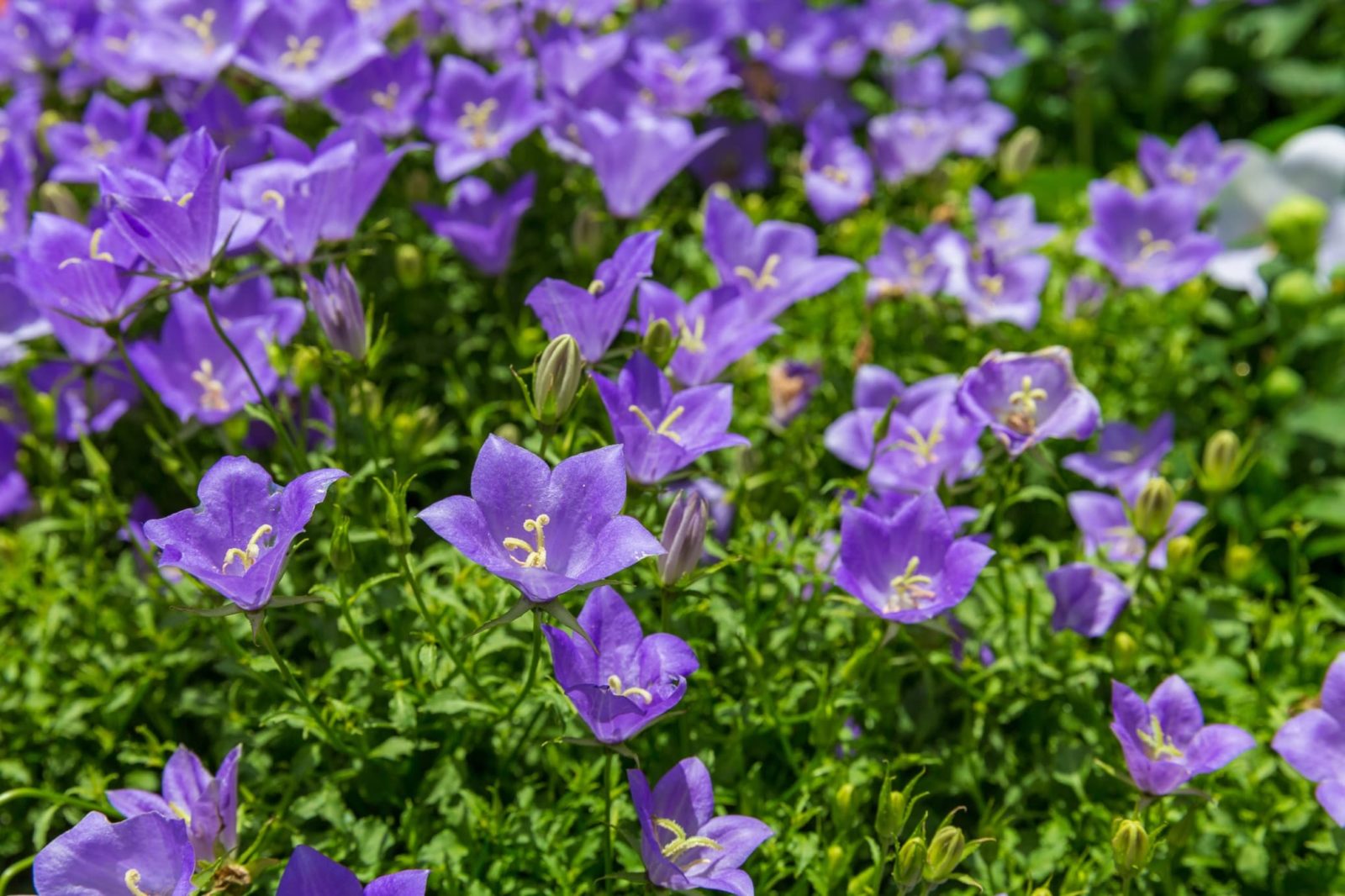
PERENNIALS > PLATYCODON > VARIETIES
Reviewed By COLIN SKELLY

Colin is a Horticulturist and Horticultural Consultant with experience in a range of practical and managerial roles across heritage, commercial and public horticulture. He holds the Royal Horticultural Society’s Master of Horticulture award and has a particular interest in horticultural ecology and naturalistic planting for habitat and climate resilience.
IN THIS GUIDE
- 1) P. grandiflorus
- 2) P. grandiflorus ‘Astra Double Blue’
- 3) P. grandiflorus ‘Fuji Blue’
- 4) P. grandiflorus ‘Mariesii’
- 5) P. grandiflorus ‘Apoyama’
- 6) P. grandiflorus ‘Misato Purple’
- 7) P. grandiflorus ‘Astra Pink’
- 8) P. grandiflorus ‘Mother Of Pearl’
- 9) P. grandiflorus ‘Fairy Snow’
- 10) P. grandiflorus ‘Hakone White’
- 11) P. grandiflorus ‘Komachi’
- References
PLATYCODON GUIDES
Varieties
Here is a very odd fact –
The Balloon Flower, ie. Platycodon grandiflorus, is the one and only member of Genus Platycodon.1Platycodon A.DC. (n.d.). Kew Botanic Gardens. Retrieved July 31, 2023, from https://powo.science.kew.org/taxon/urn:lsid:ipni.org:names:5791-1
Yet the Botanical family to which this genus belongs, Family Campanulaceae, contains 94 genera (according to Kew Botanic Gardens) which include a few thousand species!2Campanulaceae juss. (n.d.). Kew Botanic Gardens. Retrieved July 31, 2023, from https://powo.science.kew.org/taxon/urn:lsid:ipni.org:names:30000171-2
Abundant in eastern China and other East Asian regions, this plant is also known as the Chinese Bellflower.
The locus of divergence is reckoned to be ‘Asia’ – rather a large landmass; however, the rational inference is that the locus was East Asia, the site of Platycodon’s long-known ubiquity and cultural value.
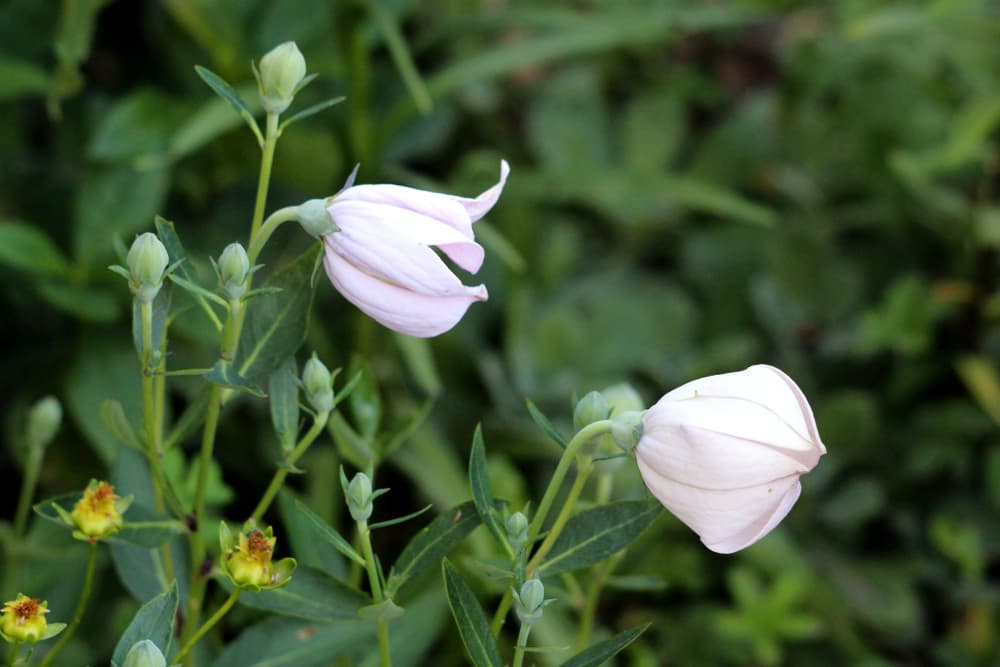
The majority of Platycodon floriculture has taken place in Japan, Korea, and China – it arrived in Europe through Austria.
“Thanks to this breeding, there are cultivars of this one species that are suitable for borders, containers and rockeries,” says Colin Skelly, a Horticultural Consultant.
“Although some cultivars have made their way into UK gardens, there are some here that deserve a wider audience (and I’ll be looking out for them for my own garden).”
Platycodon has been cultivated in Europe to a relatively limited extent.
A diverse selection of cultivars are presented underneath:
1) P. grandiflorus
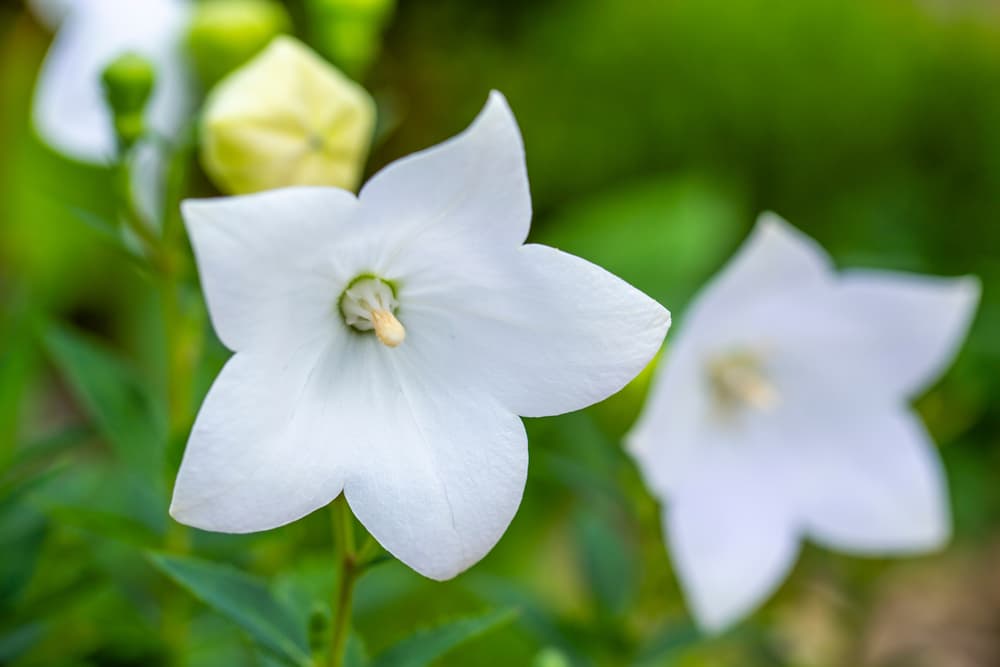
The sole species, grows from 60cm up to 1m with a spread of only 30-40cm.
It has bluish-green foliage and the flowers are a rich purple with obvious veining, and are 5-6cm across.
This plant has received the RHS Award of Garden Merit.
2) P. grandiflorus ‘Astra Double Blue’
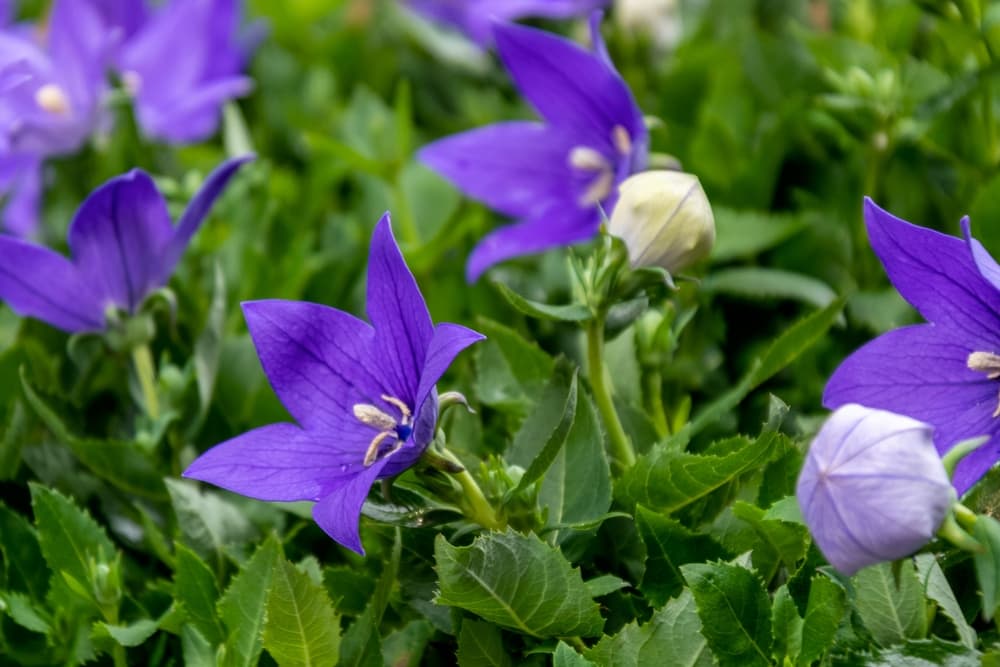
Bears double flowers of a lavender hue that are about 7cm in width.
The petals have a pleasing alternating or staggered arrangement such that the inner petals do not overlap the outer ones.
The plant grows to only about 25cm.
3) P. grandiflorus ‘Fuji Blue’

Even by Platycodon’s robust standards, this variety is especially resistant to pests and diseases.
Its bluish-purple flowers are about 6cm across.
The translucent petals display pronounced delicate venation.
This compact cultivar has a height and spread of 40-50cm.
4) P. grandiflorus ‘Mariesii’
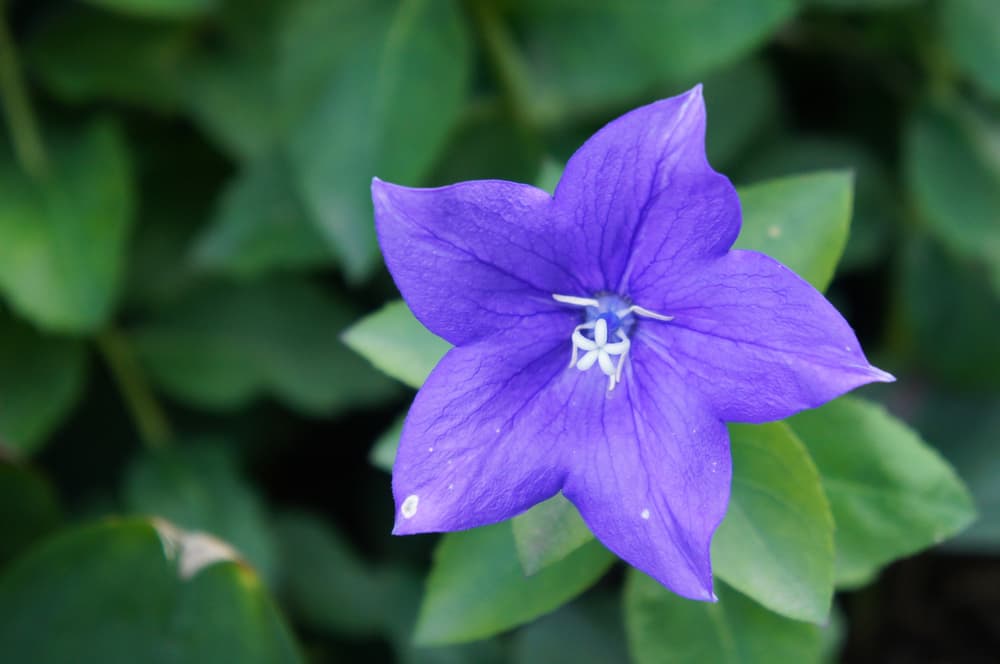
A cultivar that has caught on in the United Kingdom yet is virtually unknown in the United States.
It is compact at 40-50cm in height and has a similar spread.
The 5cm flowers are light purple with a bluish flush.
Recipient of the RHS Award of Garden Merit.
5) P. grandiflorus ‘Apoyama’
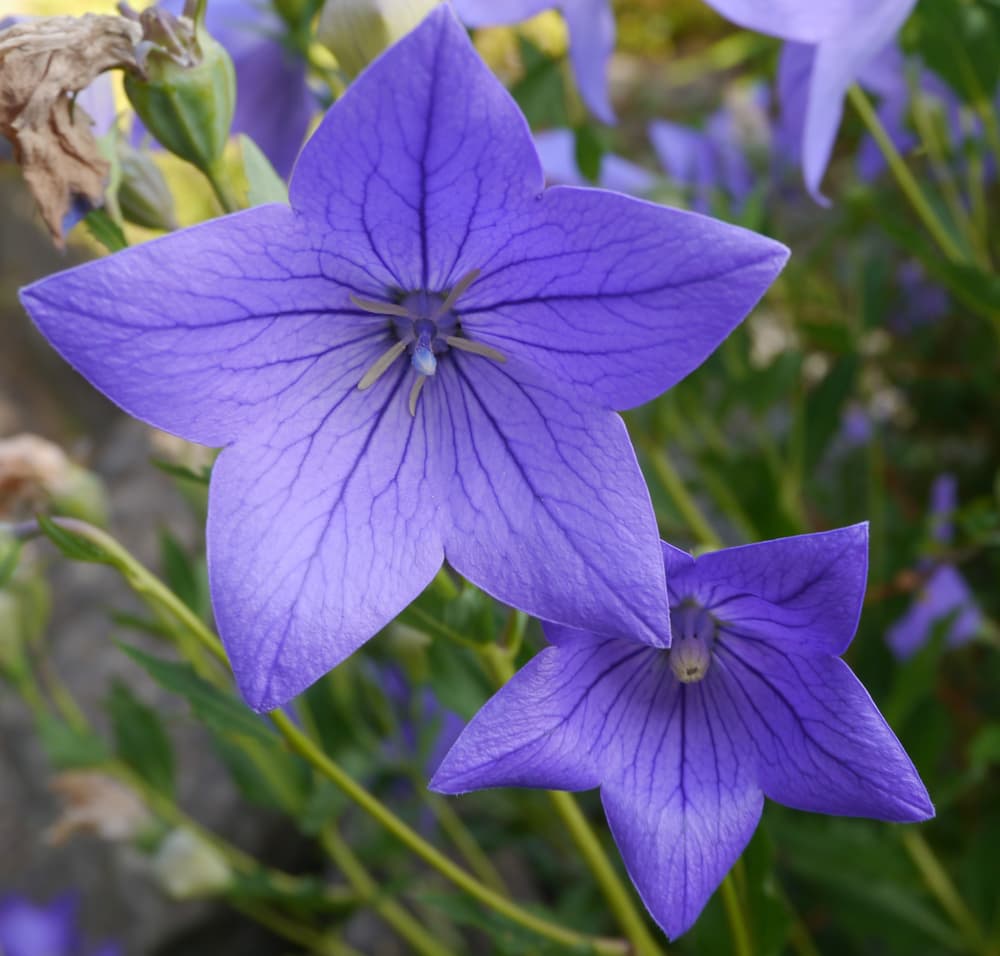
Yet another cultivar that has caught on in the UK.
The flowers are about 5cm wide and are a light lavender shade.
The petals display a filigree of veins.
This is a dwarf cultivar that grows to only 20-25cm.
Another RHS Award of Garden Merit award recipient.
6) P. grandiflorus ‘Misato Purple’
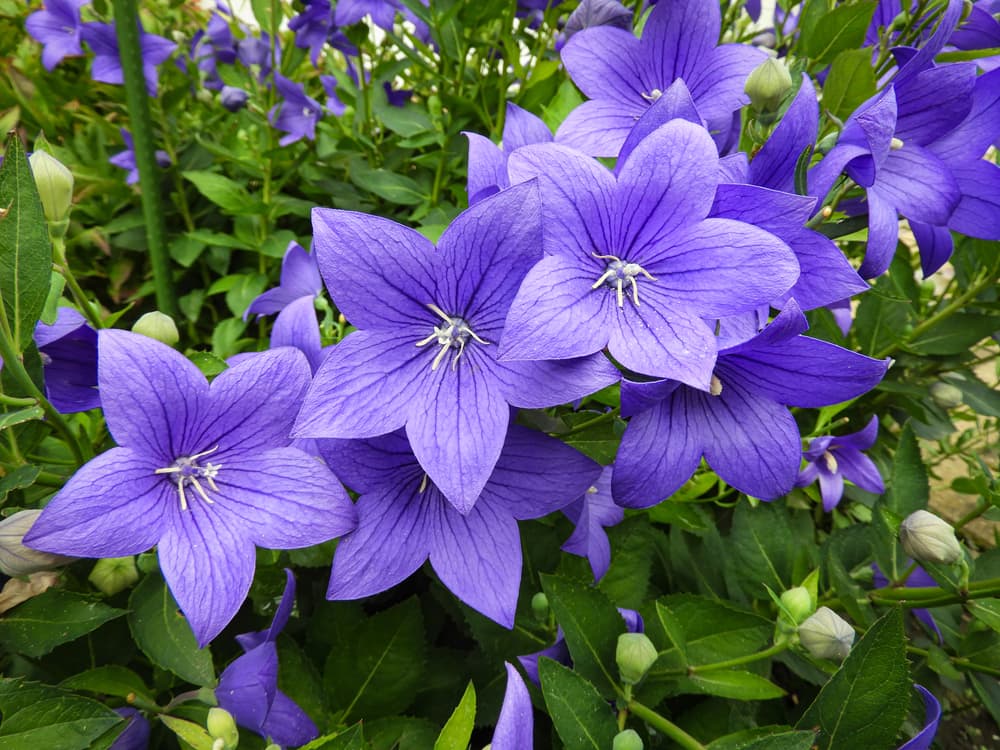
Not particularly floriferous but it bears true violet flowers that are large at nearly 9cm across.
They exhibit dark, delicate venation.
This is a compact variety that attains a height and spread of about 50cm.
7) P. grandiflorus ‘Astra Pink’
Stands out among its purple-hued siblings due to its pale pink tone.
This is a relatively floriferous variety and the blooms are also good-sized at about 7cm.
It is a dwarf cultivar that grows to about 20cm with a similar spread.
8) P. grandiflorus ‘Mother Of Pearl’

Also bears 7cm flowers which are also pink but of a more upbeat candy pink shade.
They are rose-red at the centre.
This is a tall variety that attains heights from 75-85cm.
9) P. grandiflorus ‘Fairy Snow’
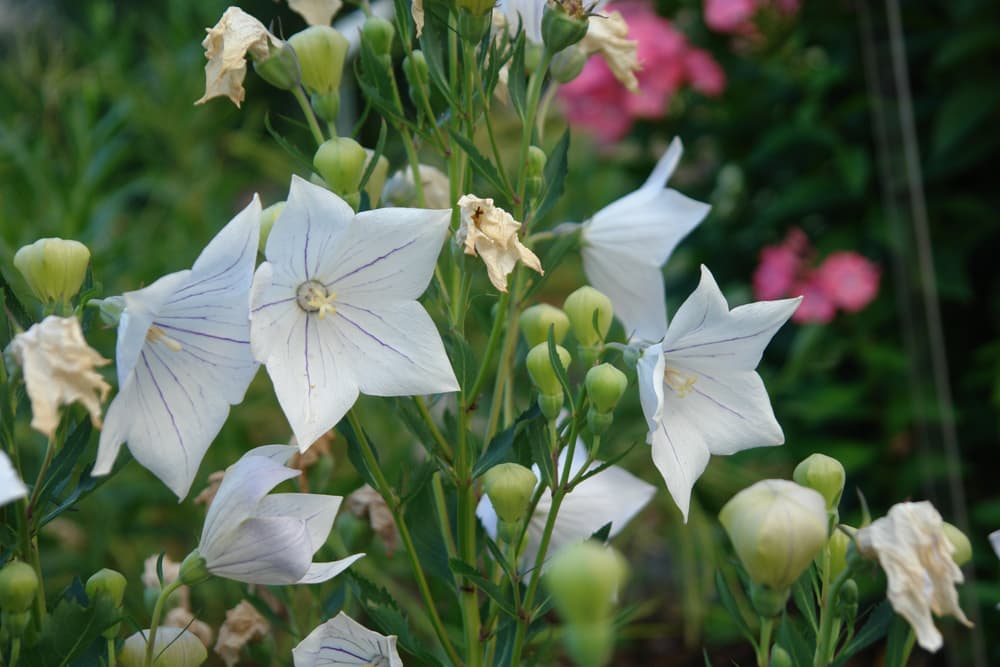
Another cultivar that stands out because this one is white.
It displays delicate bluish radial veining and the flowers are only about 4cm across.
It too is a dwarf variety that grows to about 20cm with a similar spread.
It has a relatively long blooming season.
10) P. grandiflorus ‘Hakone White’

May be said to stand out twice as much because it bears pure white double flowers.
What’s more, the flower is large at 7-8cm.
This tall cultivar grows from 75cm to 1m.
Unlike other cultivars, it is not cold-hardy.
11) P. grandiflorus ‘Komachi’
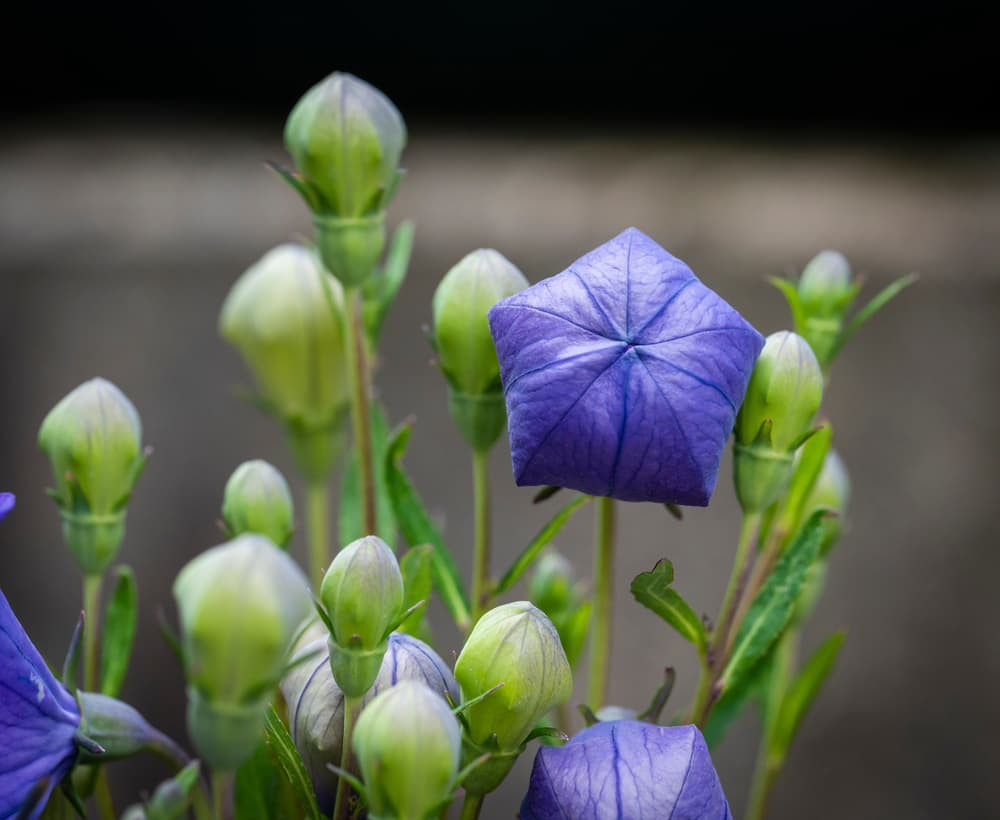
Could potentially be known as the real ‘Balloon Flower’ – this amusing cultivar only bears purplish ‘balloons’.
Call them buds or call them flowers, they never open and stay in that puffed-up state.
This cultivar grows from 80cm to 1m.
Other notable cultivars include ‘Hakone Blue’, ‘Baby Blue’, ‘Zwerg’ and ’Shell Pink’ (not to be confused with ‘Perlmutterschale’).
References
- 1Platycodon A.DC. (n.d.). Kew Botanic Gardens. Retrieved July 31, 2023, from https://powo.science.kew.org/taxon/urn:lsid:ipni.org:names:5791-1
- 2Campanulaceae juss. (n.d.). Kew Botanic Gardens. Retrieved July 31, 2023, from https://powo.science.kew.org/taxon/urn:lsid:ipni.org:names:30000171-2

